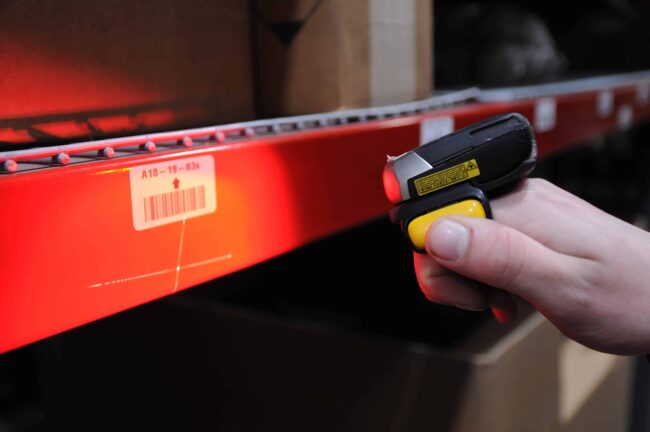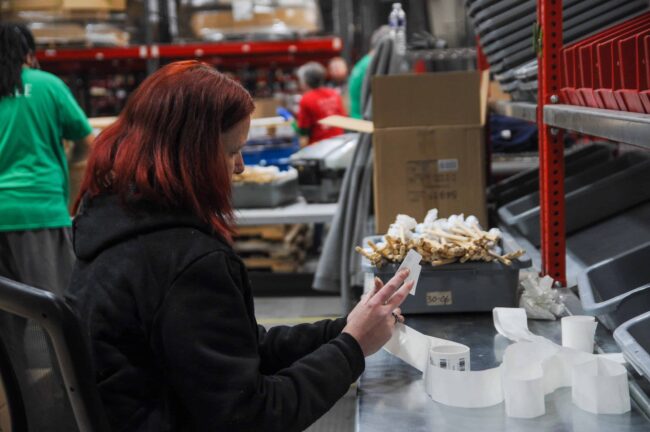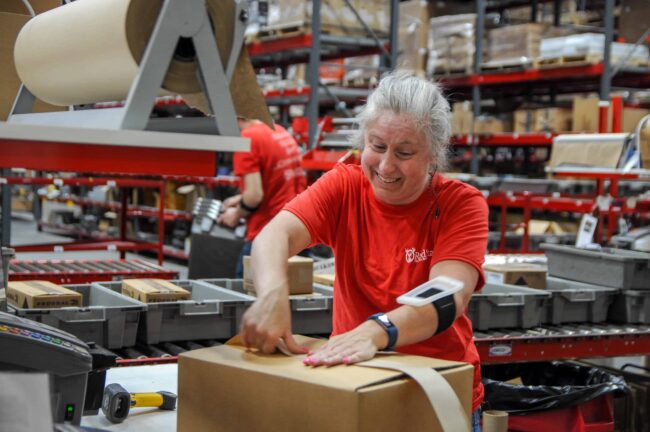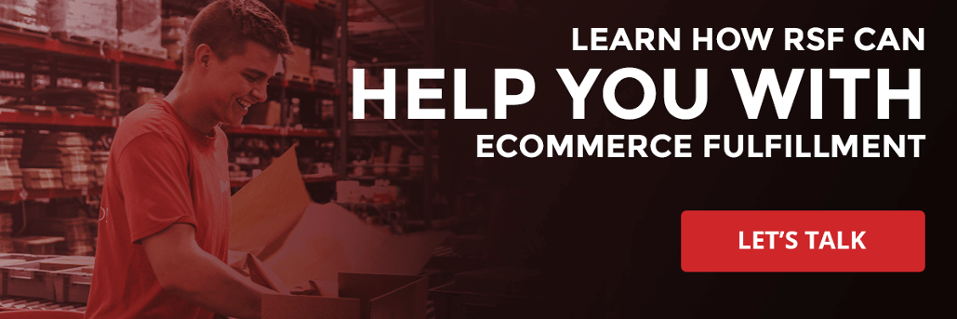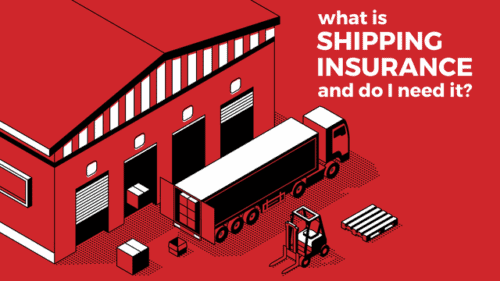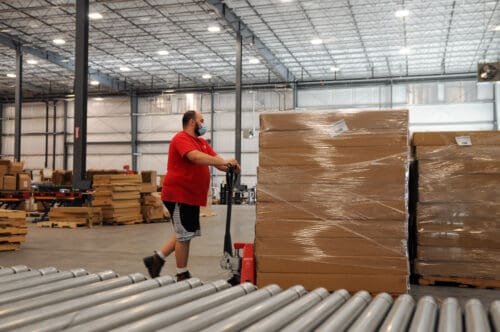Your eCommerce shipping and expertise can make or break your business. The logistics knowledge needed to manage inventory, plan a warehouse, and fulfill orders directly impacts your most significant investments and needed revenue streams. When failures persist, a poor eCommerce shipping capability can sink your business even when the market is operating normally.
To help businesses gauge their current capabilities and look for opportunities to improve their eCommerce fulfillment strategy and overall business success, we’ve put together five of the most important questions to ask your team. Answer them carefully and honestly to understand how to position your business and be willing to reach out for support if you want to improve.
1. Are you sticking to your capabilities?
Many eCommerce companies will approach creating a shipping strategy based on what customers want. That’s an intelligent consideration, but it can get you into trouble. Review what your team or partner can do and base promises around that. It’ll protect your reputation and revenue streams.
Think of it like this. What happens if you offer free two-day shipping on every order, but your warehouse crew can’t get orders packed and out the door fast enough? Customers don’t get their orders on time, becoming grumpy and leading to poor reviews. They may even ask for a refund.
Instead, you might promise free delivery within 10 business days. Many of the standard shipping rates and options available to you, including flat rate shipping, will beat that timeframe. This gives you leeway on how quickly you must pick and pack orders. You’ve built lead time in, and when your team isn’t in a crunch, the customer gets their order earlier than the 10-day limit.
If your current promises don’t meet customer demands, improve operations or find a new partner to grow to those expectations. Only commit when you’re sure you can deliver, or you’ll likely face increased returns, refunds, and complaints.
Read the Red Stag Fulfillment guarantees to understand what customers might expect.
2. Can you offer more eCommerce shipping choices?
Most eCommerce companies will focus on providing free shipping right away, no matter how large or small their store is. It’s a wise initial focus because research tells us that 93% of people are likely to buy more from you if you offer free shipping. At the same time, nearly two-thirds of eCommerce shoppers say they’re at least “somewhat likely” to abandon a cart if free shipping isn’t an option.
Free is a great shipping solution because you’re helping people plan for costs and optimize their budget for your products. However, it doesn’t always work for domestic shoppers, and it can be a more significant issue for international shipping. It’s easiest to start by offering free shipping, but you’ll quickly see that customers may want something else, or you might need to adjust that offer to protect your revenue.
When possible, allow customers to get their package on their terms. The best shipping options for the customer experience are generally a mix of shipping services. This will often include either standard two-day delivery or the chance to pay for it. You might offer delivery for a specific day or multiple price points. If you have a physical location nearby, why not give them the chance to buy online and pick up in your store?
With eCommerce platform integrations, you should be able to look across carriers like FedEx, UPS, and USPS to see multiple delivery options. Take that data to determine which works best for you — this may mean only working with USPS and FedEx, for example. See what shipping labels you can support, who will pick them up at your location, and more.
Options to consider including
Based on that data, create a list of shipping offers for people to choose from for their package. Display these options and shipping costs during the checkout process and explain them in your FAQ. Some potential options include:
- Same-day or next-business-day delivery
- Two-day delivery
- Three-day delivery
- Standard ground
- Special options, such as shipping to Alaska or Hawaii
- International shipping
- Add-on features such as signature requirements
Online stores should seek out shipping solutions that make these possible. If you can’t determine how to support FedEx and UPS, or your average shipping cost feels out of control, it’s time to ask for help.
Default to working with multiple carriers
Today’s shipping process for your online business should include more than one carrier. That can be a hard effort if you’re growing, but it’s all about protecting your business. When you’re stuck with one shipping service, you’re out of luck if they experience an outage or other problem.
During the COVID-19 pandemic, RSF had a carrier partner abruptly reduce the shipping volume they could handle for us. If we didn’t have multiple backups in place, customer order fulfillment would have suffered. By regularly comparing rates and testing different safety and speed options, we’ve built a relationship with each major carrier. Optimizing business in steady, regular times is important because it enables you to adapt quickly during disruptive times.
That flexibility also made us a common choice for companies moving away from Amazon fulfillment services. Amazon had restricted goods without many options for impacted businesses to choose. Small shops had few solutions beyond waiting for Amazon to open back up to them, which could cost sales and harm potential customer orders.
See what other COVID-19 lessons Red Stag Fulfillment learned here.
3. Are you ignoring proactive fulfillment services?
There are some improvements you can enact quickly that won’t raise shipping costs and are likely to be supported by platforms such as Shopify or with tool integrations. Prioritize proactive steps you can take with these options to deliver a better customer experience, even if you can expand your team or offer more shipping options.
One top place to start is how you handle tracking numbers and notifications for customers as well as your eCommerce business. Pay attention here because it’s as crucial for the free shipping as any of those expedited options you make available on a package.
Tracking a shipment is both good business and good marketing. What you want is the ability to see where orders are at any given moment. You’ll likely have to work with more than just a standard Shopify platform or 3PL integration with your order management to achieve this.
Instead of waiting for the customer, you should regularly be asking, ‘Where is that order?’
Track each order’s status from inventory allocation through pick and pack and then all along the fulfillment workflow. Record core metrics for each order, such as:
- how long it took to process,
- pick and pack time,
- when it was sent to a carrier,
- shipping rates and costs,
- delivery date, and
- if the product was returned.
These will help you understand how your eCommerce shipping is working for customers and if you need a new shipping strategy. You might find that things are arriving earlier than you expect, and you can shift to options like flat rate shipping for savings.
Can’t get this information right now? Use this questionnaire to find a 3PL that can help.
The customer service angle of eCommerce shipping
The external reason you’re tracking these elements is that you want to alert customers if there is an issue with their order, whether coming from platforms like Amazon or a carrier like FedEx. Knowing where their package is and monitoring for delays allows you to send an email to alert the customer and provide updated tracking details or estimates based on new details.
By leveraging eCommerce business tools and information from fulfillment partners, you can automate these emails, too. In the event of a delay, you’re proactively talking to the customer. That’ll reduce their frustration and can reduce the number of support requests you get — some say by up to 50%.
If you’ve got an established audience for your online business, this is a marketing opportunity, too. The day before a package is expected to arrive, for example, you can send an email with videos showing how people use and love the product a customer purchased. When a package is out for delivery, why not send an email that shows people how to create an unboxing video? Or you could follow up with a questionnaire about your packaging.
If there’s a delay, explain the shipping process and what might have happened to the customer order. Consider how they’ll feel and be honest. UPS or the carrier you choose likely doesn’t have enough customer information to provide status updates proactively. That’s your opportunity to step in, offer a solution, and demonstrate value beyond the sale.
4. Is packaging part of your branding?
Part of improving the customer experience is creating connections. While your packaging won’t help you reduce cart abandonment in most cases, it can be a strong tool for building long-term relationships. While there are some added fulfillment or shipping costs, customized and personalized packaging can help you reach the customer and reaffirm company or brand attributes.
Look for options you can incorporate into existing workflows. Packing stations, for instance, may have access to computers and printers. There may be ways to personalize a shipping label based on what’s ordered. Stickers and tape can help you customize, such as branded tape to reaffirm the company connection. You can also have custom messages such as “fragile” for any breakable items or “A surprise inside” for orders with gift receipts.
If your setup prints inserts based on the order, whether it’s general information or specific coupons, you can use templates to personalize these notes with the customer’s name. Thanking them for the purchase as they open the box helps you build a strong relationship.
Your eCommerce platforms and order management systems will have different options for these customizations. If you use a 3PL partner like Red Stag, ask what’s available. You may be able to shift to these custom options with little to no extra labor costs, just pricing for buying the custom packaging.
See this Ultimate Guide to eCommerce Packaging for more.
Reaffirm your commitments
One of the most common ways packaging is used to reflect company values is when it’s green. Reclaimed materials and recyclable packaging tell customers that you care about the environment. They reinforce any claims you make as part of your overall messaging outside of order fulfillment.
Packaging can cut against your claims when you choose inferior materials. Styrofoam and the dreaded packing peanut make claims about environmental stewardship ring hollow. Some Styrofoam options now also violate laws.
Remember that much of the customer experience is based on perception. Biodegradable peanuts are a common infill, but customers may not realize they’re biodegradable. You’ll have to find a way to educate the customer during the product unboxing or risk reputational harm. It might be worthwhile to graduate to other materials, such as shredded cardboard, if they meet your protection requirements.
See these best practices for sustainable packaging.
Review the promises you make to customers. Then, check your fulfillment steps against them. You might discover a disconnect that is costing you repeat customers.
5. What’s your plan for normalcy and cost increases?
After a year of feeling like our hair is on fire each morning, things are starting to stabilize, and we just might be seeing what “normal” will look and feel like for 2021. Ultimately, eCommerce shipping demand is leveling out and remaining higher than what anyone would have predicted back in 2019. There’s significant growth in eCommerce platforms and shipping solutions, while carriers are slowly building up the capacity to respond.
Normal will be a strained international supply chain that demands effective U.S. fulfillment partners to avoid costing you customers.
Start planning for your busy season now. That might be the summer as more vaccinated people begin gathering and exploring the city or great outdoors. Even if your next growth phase will be on Amazon’s Prime Day or the Q4 holiday season, now is the time to test your systems to ensure you’re getting the best shipping rates. Verify that you can print custom labels or support new boxes and a broader shipping strategy.
The goal for eCommerce businesses right now is to create a plan for normalcy, including standard shipping cost increases. As last holiday season taught us, expense growth can come from general rate increases, delays that make you need to expedite shipments, and acquiring more storage space to handle inventory ahead of the increase in orders.
Find someone who can help you with each. Then, find another partner. Give yourself extra support and a fallback position so that you’re not stuck if a carrier drops capacity, a partner’s system goes offline, or illness strikes one distribution center.
Prep to pay more for international shipping
If you move goods internationally by securing your own lanes or are working with a freight forwarder, you’ve likely seen higher costs throughout the COVID-19 pandemic. Uncertainty and the bullwhip effect have made logistics continuity nearly impossible, and rates have tracked that uncertainty.
Unfortunately, many of those high rates are now expected to last for at least a year, with reports that container and ocean freight contracts are signed, sealed, and delivered. The takeaway is that contracts have locked these price hikes, and companies importing goods will feel their brunt.
Transportation concerns, such as labor shortages and delays at ports, have created bottlenecks that will take significant time to resolve. The Suez Canal blockage didn’t help an already struggling industry. All of this is happening while eCommerce demands are up, and consumers are beginning to return to normal expectations of two-day delivery and in-stock inventory.
Address this by adding lead time into your shipping process. Work with a 3PL for more innovative inventory management to see if you can scale up your existing inventory to account for delays. Increasing order size when you resupply may come with short-term cost increases, but it better positions you to avoid revenue losses from backorders and stockouts.
If you can’t afford to expand your warehouse, shift to a 3PL built to scale with you.
So, what do I do now?
Your eCommerce shipping capabilities impact a wide range of your business and operational success:
- Automatically comparing costs and enabling multiple carrier options can keep eCommerce shipping prices under control and safeguard revenue.
- Transparent shipping policies and costs help minimize cart abandonment rates.
- Effective shipping that’s on time and has the correct order can help improve your customer lifetime value.
- Optimizing the processes or selecting expert partners to control risk and expense as you scale.
Getting it right can be difficult, however. There are many moving parts, especially if you’re dealing with inbound shipping, both imports and exports. ECommerce platforms can help some, but your business needs a robust shipping solution and strategy designed to support you as the market changes. You need a team of experts in inventory management, logistics, fulfillment, and warehousing to keep your operations running smoothly.


